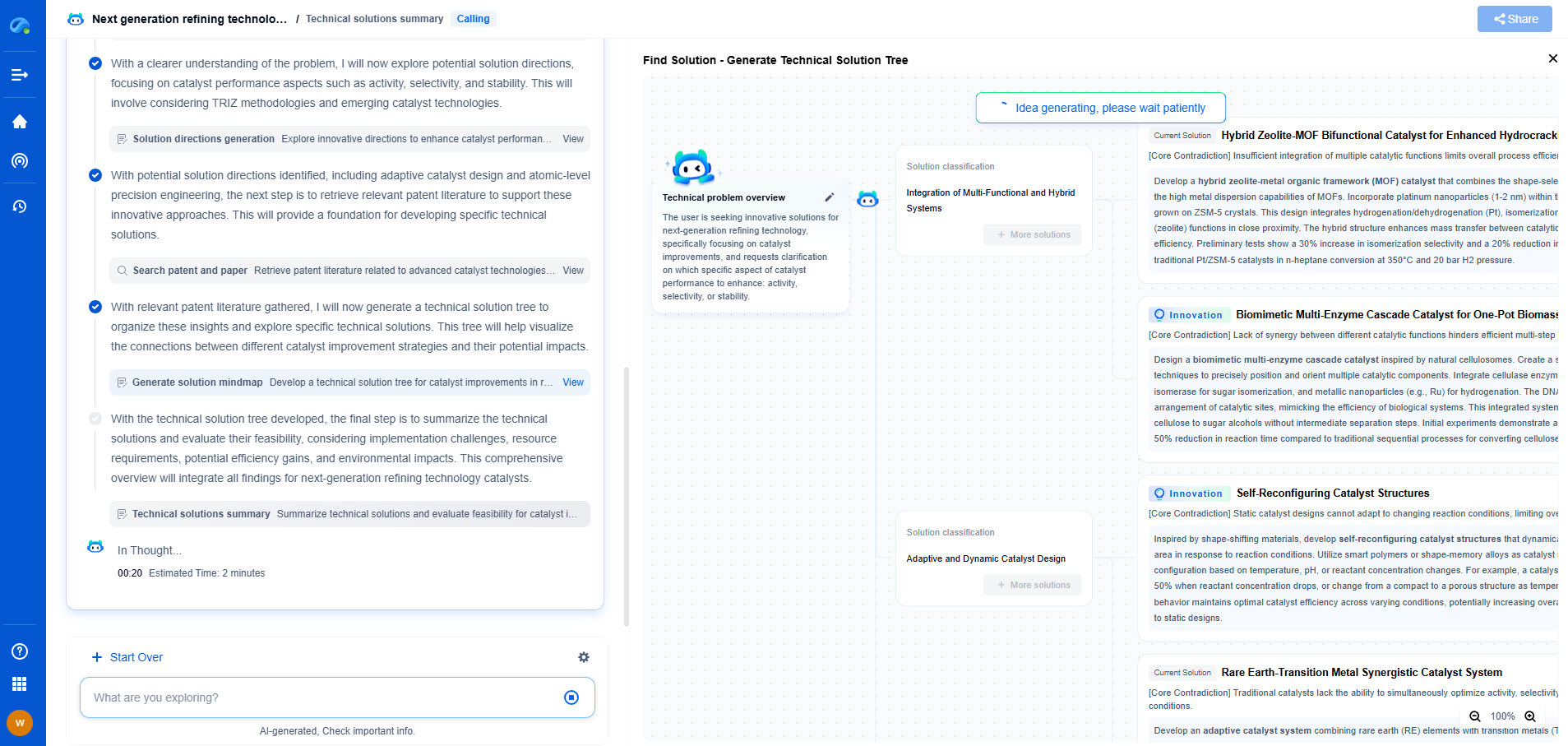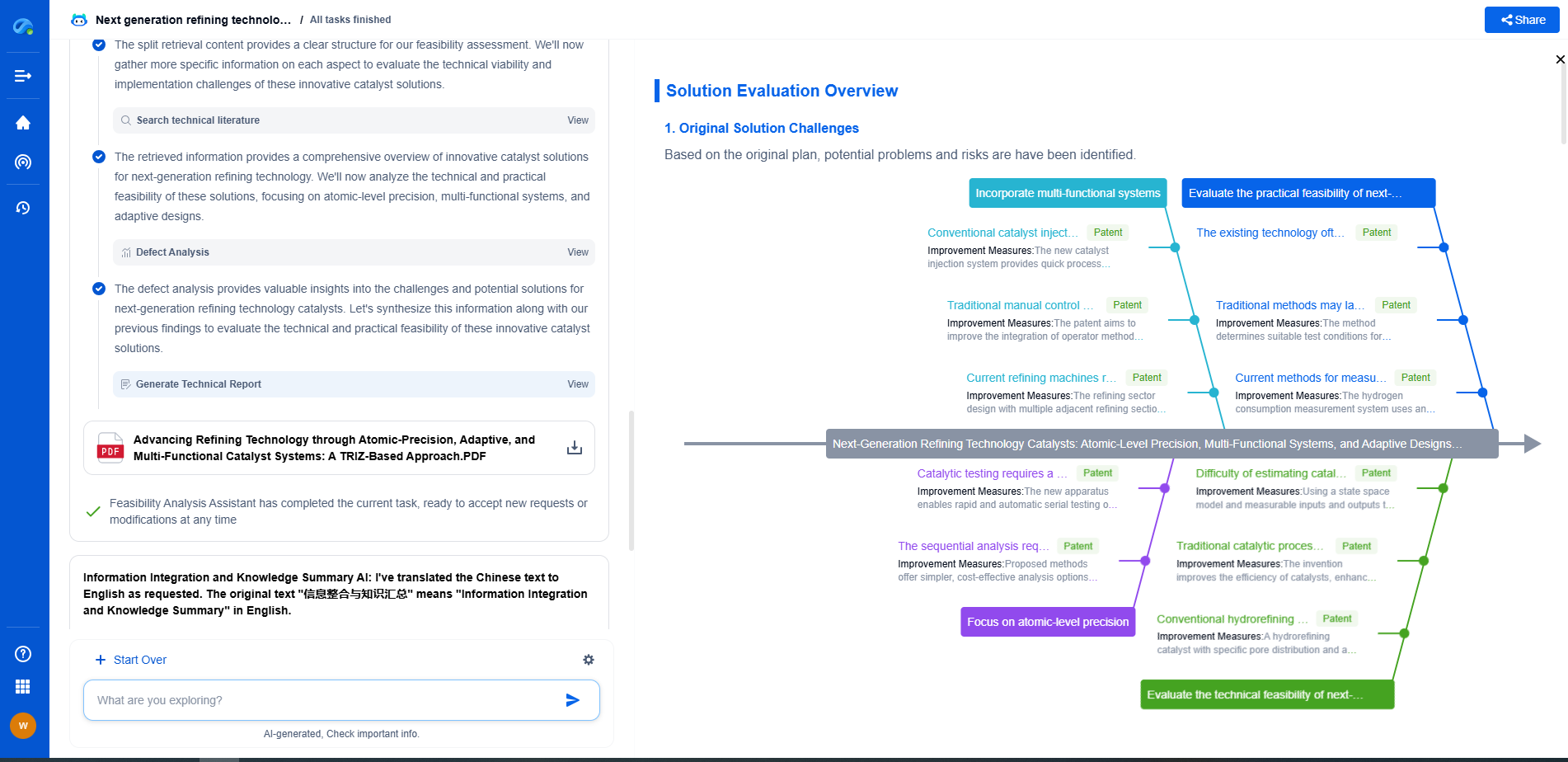Smart Homes & HVAC: Pressure Sensors for Energy Efficiency
JUL 14, 2025 |
The evolution of smart home technology has brought about significant advancements in how we manage household energy consumption. While smart thermostats and automated lighting have been at the forefront of energy management discussions, another crucial yet often overlooked component is the HVAC system's pressure sensors. These sensors play a pivotal role in optimizing energy efficiency and maintaining a comfortable home environment.
Understanding Pressure Sensors in HVAC Systems
Pressure sensors in HVAC systems are devices that monitor and measure the pressure of gases or liquids within the system. By providing real-time data, these sensors allow for precise control of the HVAC system's airflow and temperature distribution. This ensures that the system runs efficiently, reducing unnecessary energy consumption and wear and tear on the equipment.
Role in Enhancing Energy Efficiency
One of the primary advantages of using pressure sensors in smart homes is their ability to enhance energy efficiency. By accurately monitoring pressure levels, these sensors can detect issues such as duct leaks or clogged filters, which can otherwise lead to energy waste. Once a problem is identified, the system can alert homeowners or automatically adjust settings to correct the inefficiency.
Moreover, pressure sensors enable variable air volume (VAV) systems to operate more effectively. In these systems, the airflow is adjusted based on the specific needs of different areas in the home, which is determined by pressure readings. This targeted approach ensures that only the necessary amount of energy is used, leading to significant cost savings and reduced environmental impact.
Integration with Smart Home Systems
The integration of pressure sensors with smart home systems allows for seamless automation and control. Modern smart home platforms can aggregate data from various sensors, including pressure sensors, to provide comprehensive energy management solutions. Through smartphone apps or central control panels, homeowners can monitor their HVAC system's performance, receive alerts, and make adjustments remotely.
For instance, if pressure sensors detect a drop in pressure indicating a potential leak, the system can send an alert to the homeowner's device. Additionally, the HVAC system can be programmed to enter an energy-saving mode during periods of low demand, all informed by the data provided by pressure sensors.
Impact on Comfort and Indoor Air Quality
Beyond energy efficiency, pressure sensors contribute to improved comfort and indoor air quality. By ensuring that the HVAC system maintains optimal pressure levels, these sensors help in maintaining consistent temperatures throughout the home. This eliminates hot or cold spots and ensures that all areas of the home remain comfortable.
Furthermore, proper pressure calibration helps in maintaining adequate ventilation, which is crucial for indoor air quality. This can prevent the buildup of pollutants and allergens, contributing to a healthier living environment.
The Future of Pressure Sensors in Smart Homes
As smart home technology continues to evolve, the role of pressure sensors in HVAC systems is expected to expand. Advances in sensor technology, including wireless communication and improved data analytics, will further enhance the capabilities of these systems. This will make it easier for homeowners to achieve even greater levels of efficiency and comfort.
In addition, as awareness about energy conservation and environmental responsibility grows, more homeowners are likely to adopt advanced HVAC systems equipped with pressure sensors. This trend will not only contribute to individual cost savings but also play a part in the larger movement towards sustainable living.
Conclusion
Incorporating pressure sensors into smart home HVAC systems is a strategic move towards enhanced energy efficiency, cost savings, and improved indoor comfort. These sensors provide critical insights that enable precise control and automation, setting the stage for more sustainable and comfortable living environments. As technology continues to advance, the integration of pressure sensors will undoubtedly become a standard feature in smart homes, driving forward the future of energy-efficient living.
From 5G NR to SDN and quantum-safe encryption, the digital communication landscape is evolving faster than ever. For R&D teams and IP professionals, tracking protocol shifts, understanding standards like 3GPP and IEEE 802, and monitoring the global patent race are now mission-critical.
Patsnap Eureka, our intelligent AI assistant built for R&D professionals in high-tech sectors, empowers you with real-time expert-level analysis, technology roadmap exploration, and strategic mapping of core patents—all within a seamless, user-friendly interface.
📡 Experience Patsnap Eureka today and unlock next-gen insights into digital communication infrastructure, before your competitors do.
- R&D
- Intellectual Property
- Life Sciences
- Materials
- Tech Scout
- Unparalleled Data Quality
- Higher Quality Content
- 60% Fewer Hallucinations
Browse by: Latest US Patents, China's latest patents, Technical Efficacy Thesaurus, Application Domain, Technology Topic, Popular Technical Reports.
© 2025 PatSnap. All rights reserved.Legal|Privacy policy|Modern Slavery Act Transparency Statement|Sitemap|About US| Contact US: help@patsnap.com

